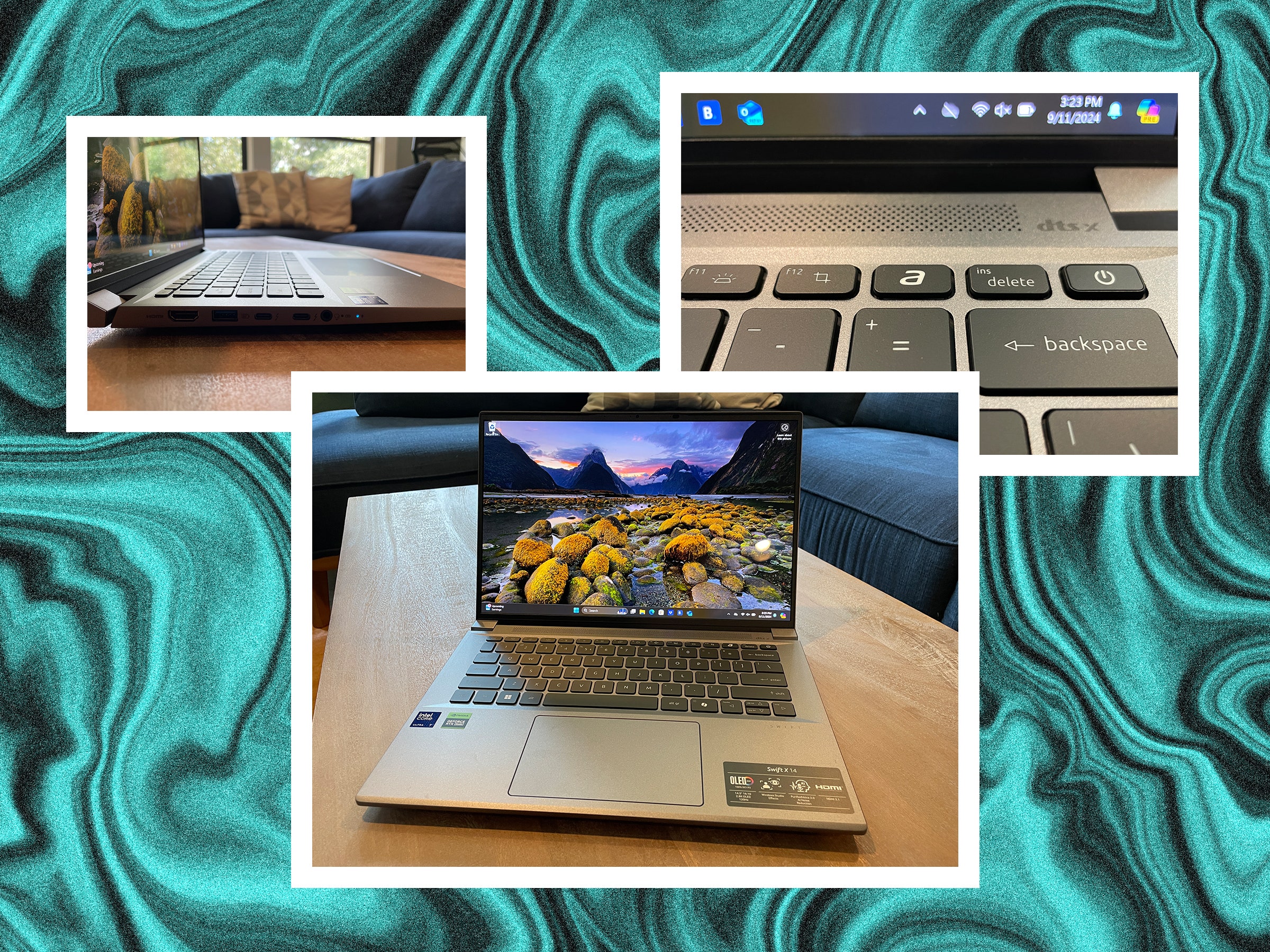Samsung’s new Galaxy S24 lineup already has something to worry about. The OnePlus 12 comes hot on its heels with that old flagship killer essence. Boasting the latest Snapdragon chipset, a juiced display, and a camera system that's not easily dismissed, the OnePlus 12 has a lot to offer – enough to butt heads with the Galaxy S24 Ultra and Pixel 8 Pro. It would be one thing if the OnePlus 12 were competing with the latest flagship smartphones at their same prices, but the $800 starting price of the phone has it threatening the models at the bottom of the stack while its features and capabilities rival those at the top.
OnePlus 12 – Design and Features
If you’ve seen the OnePlus 11, you won’t be too surprised by the OnePlus 12. There’s little change to its visual identity, with the same aesthetic design largely intact. The front is dominated by display while the rear is mostly unadorned save for the gargantuan camera bump – a sprawling circle about the diameter of the bottom of a can of soda – that houses the phone’s three-camera system. The rear of the phone uses an etched glass that feels just the faintest bit gritty, like ultrafine sandpaper. This makes the rear shimmer with a velvety sheen, but may not be everyone’s cup of tea in terms of feel.

While Google and Samsung have moved away from curved displays, the OnePlus 12 has curved sides that are a little more prone to accidental pressing and visual distortion of content that extends into the curve. The effect also leaves the bezels looking somewhat uneven.
In terms of durability, OnePlus isn’t leading the pack, but isn’t trailing far behind. The OnePlus 12 has an aluminum frame like many of its competitors – save the highest-end Samsung and Apple phones, which have moved to titanium. The rear is coated in Gorilla Glass while the front gets Gorilla Glass Victus 2, a tough glass we’ve seen hold up well on the Pixel 8 Pro. OnePlus pre-applies a protector to the display that’s wonderfully fit. Unfortunately, that protector is not very durable, suffering considerable scratching in the short time of testing.

The phone also falls short on waterproofing. With an IP65 rating, it’s not protected against submersion or strong water jets, falling well short of the IP68 protection many others offer. You may not worry about water jets in your day to day, but a dip into a pool, toilet, or puddle is something folks have worried about as long as mobile phones have existed, and it’s a little disappointing when a company still doesn’t protect their top-of-the-line phone against these mundane perils.
While visually similar, OnePlus has actually increased the size of its phone in every dimension as well as bumping up its weight. It lines up with some of the bigger phones on the market, such as the Pixel 8 Pro and Galaxy S24 Ultra, though is taller and thicker than either. The boost in size is likely so OnePlus could accommodate a larger screen, which measures at 6.82 inches. It’s a mammoth display that boasts some top-end capability.
There’s no knocking a 1440x3168 resolution on a display this size. OnePlus went all out on this display, delivering a Dolby Vision-enabled, 120Hz LTPO AMOLED panel that should just about be second to none. The past year has been all about brighter displays, and while Google boasted of a 2400-nit peak brightness on the Pixel 8 family only for Samsung to leapfrog it with a 2600-nit level, OnePlus is boasting a peak of 4500 nits. All of these elements – brightness, smooth refresh, the deep contrast of OLED – make for a very visually appealing screen. It looks great, and the brightness certainly is enough to sear my eyes, though I can’t say I noticed a significant difference in brightness side by side against the Pixel 8 Pro.
Getting to enjoy Dolby Vision is also somewhat fraught, as even Disney Plus didn’t clock the display as supported, and it’s been one of the more reliable streamers for me when it comes to getting content with the HDR format. Amazon Prime Video also didn’t kick in with Dolby Vision.
On the plus side, sound quality is great. The stereo speakers offer a compelling balance while watching content, and the volume gets loud enough to keep podcasts audible even over the noise of showering. Calls also sound exceptionally clear.

OnePlus rounds out the phone with a few hardware extras. An optical fingerprint scanner lives underneath the display and registers my fingerprint in a flash. At the top edge of the phone is an infrared emitter that pairs with a IR Remote app to let the OnePlus 12 serve as something of a universal remote for various electronics – a feature I’ve seen on a handful of Chinese handsets and think is all too thoughtful to include on a do-everything device like a phone. Then there’s the charging, which OnePlus has clocked at up to 80 watts over a wired connection or 50 watts wirelessly – both incredibly fast, though beyond what I was able to test with my own charging hardware. The phone even reverse-wireless charges at up to 10 watts, though the large camera bump makes lining up phones a little tricky. And the Alert Slider still hangs on, providing quick access to toggle notification sound, vibration, and DND mode.
OnePlus 12 – Software
The OnePlus 12 comes running Android 14, which is good to see for a non-Google device launched so soon after the launch of that OS. Plenty of phones don’t start off on the latest operating system. That said, OnePlus is only committed to 4 years of OS updates and 5 years of security updates, which will come bi-monthly. With Samsung and Google both announcing 7 years of support and updates for their latest flagships, OnePlus’s offer falls short.

That issue aside, OnePlus’s Android implementation here is pleasant. It feels a bit like the plain style Google has for the Pixels, and though it lacks the automatically generated color schemes of Material You, the launcher is more flexible than Google’s. OnePlus also sticks to the older layout for the quick settings panel, which provides more settings and details at a glance than Google’s redesign, which has annoyed me for years now.
OnePlus 12 – Gaming and Performance
The OnePlus 12 is fast. That’s an area OnePlus flagships have never really suffered, and there’s no change this year. The Snapdragon 8 Gen 3 in this phone rips through everyday operation like it’s nothing. Even throwing Genshin Impact at it with max settings, it comfortably keeps the game running at close to 60fps.

Running a few benchmarks, the performance under the hood shows. The phone achieved 4842 points in 3DMark’s Wildlife extreme test, more than doubling the performance of the Pixel 8 Pro. It also ran the Solar Bay ray-tracing benchmark with an average of 32 fps, earning it a score of 8,578 points – that’s nowhere near what the RTX 4060 in my laptop put out, at 39,500 points, but a phone running at 20% the speed of a gaming laptop is still nothing to scoff at. The Pixel 8 Pro regrettably can’t even run that benchmark.
All that speed, and OnePlus even packs the phone up with memory. Even after running a bunch of tests and benchmarks, I could flip back through the recent apps list and quickly pick back up where I’d left off either instantly or with a half-second to reload on almost all of the apps except Genshin Impact.
That performance does come with some heat. OnePlus can name its cooling system whatever it wants, but no amount of “cryo” in the name can get rid of the fact the phone had a hotspot of 110 degrees Fahrenheit after running Genshin Impact for 20 minutes with the display maxed out. That’s uncomfortable to hold. On the bright side, that’s also a more extreme case. At a lower brightness, the hotspot was just 103.5 degrees after 10 minutes. Day to day use generated no noticeable heat. Streaming a movie for an hour with the display maxed also didn’t make the phone anywhere near as hot. That test also showed the strong battery life of the OnePlus 12, as it only drained 8% from the phone.
Network speed also looks good for the OnePlus 12, which supports a broad spread of network bands in the US and globally. In testing, it quickly connected to T-Mobile’s network with strong reception and solid speeds. While I frequently suffer from some lower-than-expected signal on my Pixel 7 Pro at home, the OnePlus 12 didn’t struggle.
OnePlus 12 – Camera
OnePlus hasn’t really been mounting the throne for best cameras over the years, but its efforts to produce quality camera systems aren’t without their successes. The OnePlus 12 sees some of that pay off with a respectable set of cameras, two of which are quite delightful, and one that’s serviceable. But be warned right off the bat: OnePlus defaults to slapping watermarks onto photos, and while they can be removed after the fact, doing so is tedious and sacrifices their Pro XDR formatting, which really has a way of adding some vibrance to photos with highlights that pop.
Here are the cameras the OnePlus 12 packs:
- 50MP Wide, f/1.6, 1.12-micron, OIS
- 48MP ultrawide, f/2.2, 0.8-micron, 114-degree FOV
- 64MP telephoto, f/2.6, 0.7-micron, 3x optical, OIS
- 32MP Selfie, f/2.4, 0.7-micron
Let’s start with the good. The main, 50MP wide sensor on the OnePlus 12 is a banger. Its wide aperture and large pixel combine to hold up well in middling light, and whatever OnePlus and Hasselblad have done in terms of optics has made for a camera that snaps some truly lovely photos. Color is captured naturally, and I don’t detect a hint of weird, oversharpening going on. The camera is the only one to my memory that I can zoom beyond 100% on photos and not be confronted with truly unsightly artifacts. Combined with the bokeh, the main sensor produces elegant results that, to my taste, look as good or better than anything I’ve taken with my Pixel 7 Pro.
Sometimes, the camera system tries to switch over to macro mode when a subject is very close. This uses the ultra-wide camera in place of the main sensor while cropping into a narrower field of view. The result is consistently unpleasant. That’s because the ultra-wide sensor simply isn’t as good. It’s sharp, but its colors are slightly inconsistent from the main sensor, appearing cooler, and there’s some strange sharpening that’s absent from the main sensor. The ultra-wide is decent for large landscapes with good lighting where everything in the shot is the subject, but when the ultra-wide is used to capture an image with a single subject, usually it doesn’t hold up. To remedy at least that macro issue, it’s easy enough to tap away from Macro mode, back up slightly, and shoot the photo with the main sensor.
The system also gets a telephoto camera with a 3x optical zoom that OnePlus will punch in digitally to 6x. At 3x, the results are great. They tend to hew close to the colors of the main sensor, which helps a lot for consistency when you’re trying to make a photo gallery. There’s plenty of detail in the zoomed shots, and though it can’t capture as much light, it still looks decent even when the ISO bumps up a bit to compensate. The 6x zoom is nothing special. While it might help you confirm focus on a subject, you’ll almost always be better shooting at 3x and just digitally zooming in after the fact. That’s a little disappointing, as Google and Samsung have 5x telephoto that can reach distant subjects better.
The three rear cameras all share a large piece of cover glass that fills in the giant camera ring in the back. This large surface is highly prone to smudging up with finger grease and hard to avoid touching when handling the phone. This unfortunately means a good deal of care is needed to wipe it down before taking shots. The phone will try to alert you if the lens is dirty, but the threshold appears high, as I haven’t received the alert even when the cover glass is covered in my fingerprints.
The selfie camera is satisfyingly sharp and can let a lot of light in, even snapping bright-looking photos in dimmer environments, but it sacrifices color accuracy. One shot I took had a bland blue drape in the background, but the camera turned it into a lively teal without any sort of filter applied.






